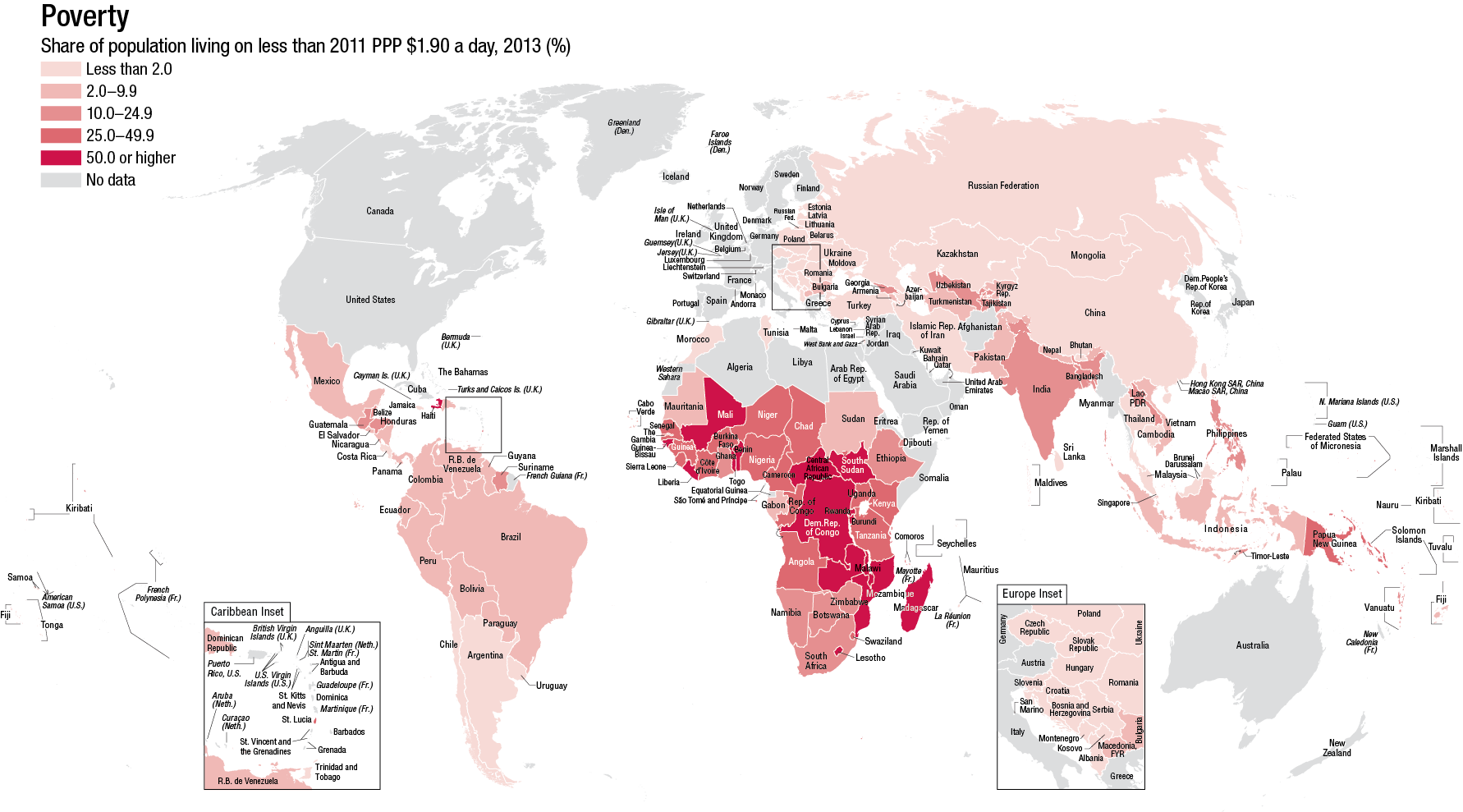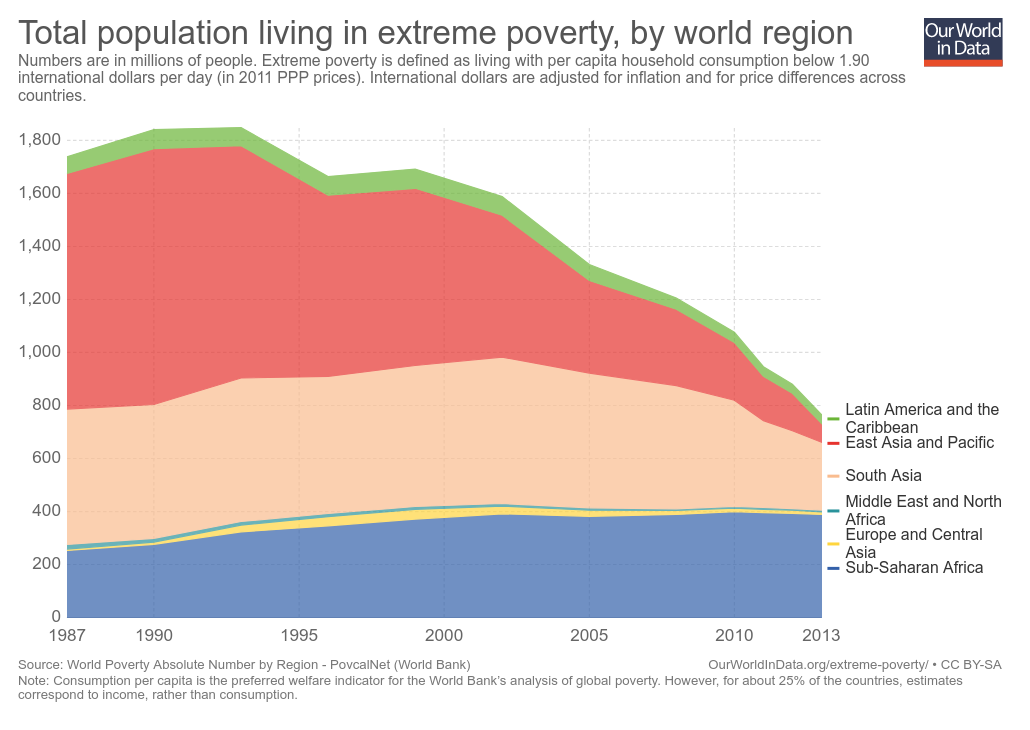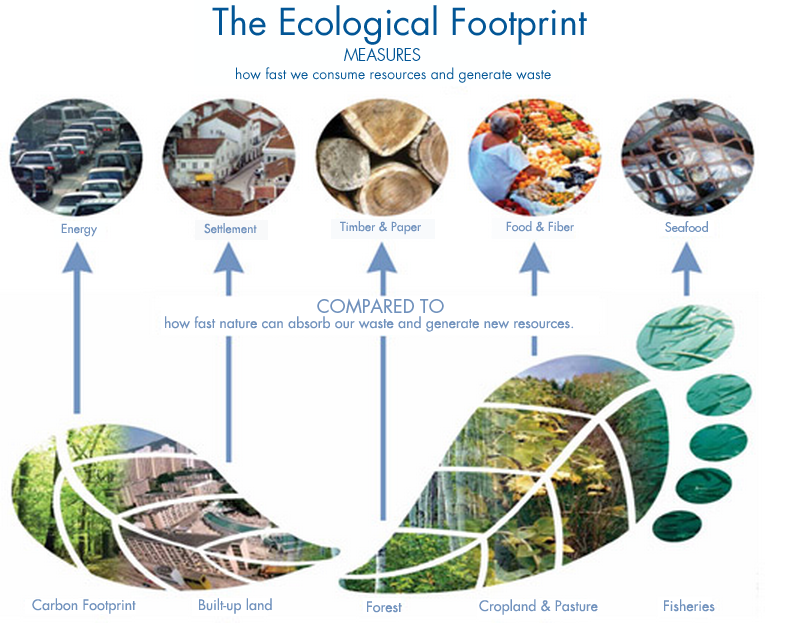Global and regional/continental progress towards poverty reduction



Follow the link below for an article containing an example of how poverty reduction differs from income equality.
The growth of the “new global middle class”
Emerging Middle Class - Changing Global Marketplace
O.P.V.L. analysis of the video above:
Origin: This video was made for UPS (United Parcel Service) which is a global transport company headquartered in The United States. UPS delivers around 14 million parcels a day to over 200 countries. Source.
Purpose: This video aims at presenting the rise of the global middle class as an economic opportunity to sellers of the US and other countries as the positive projection means an increase in the number of people with disposable income and therefore potential buyers whiling to engage in global economic transactions mainly through the internet. UPS expects an increase in revenue as one of the main global transfer companies on the planet due to the increased number of global economic transaction of goods utilizing their transport services.
Value: The message of the video is based on a well known and ongoing economic trend and makes use of a series of data which makes it objective and reliable.
Limitation: The increase in the number of global economic transactions is presented in a biased way as an all positive phenomenon without taking into consideration any concern about neither the origin of the resources and good which will be bought and sold globally nor their disposal once they are no longer considered useful. Therefore, the scope of the video is purely economic.
How The Rising Middle Class Is Changing Brazil
Measuring trends in resource consumption
Ecological Footprint is a measure of the demand human activity puts on the biosphere. More precisely, it measures the amount of biologically productive land and water area required to produce all the resources an individual, population, or activity consumes, and to absorb the waste they generate, given prevailing technology and resource management practices. This area can then be compared with biological capacity (biocapacity), the amount of productive area that is available to generate these resources and to absorb the wastes.
Source: Lawn, Philip. Globalisation, Economic Transition And The Environment. Cheltenham, Edward Elgar Pub. Ltd, 2013,.

Take the quiz HOW BIG IS YOUR ENVIRONMENTAL FOOTPRINT?
Total ecological footprint
Source: http://www.footprintnetwork.org/content/documents/ecological_footprint_nations/ecological.html
Ecological footprint per capita
Ecological Footprint vs Biocapacity (gha)
An overview of global patterns and trends in the availability and consumption of water
An overview of global patterns and trends in the availability and consumption of land/food
 |
The Aboubakar family from Darfur, Sudan, in the Breidjing refugee camp in Chad. Their weekly food, which feeds six people, costs 79p. Photograph: Peter Menzel /Barcroft Media Facebook The Revis family from Raleigh in North Carolina. Their weekly shopping costs £219. Photograph: Peter Menzel /Barcroft Media |
Follow the link below for information about trends in consumption patterns of different food groups globally and in different countries.
An overview of global patterns and trends in the availability and consumption of energy

Soure: http://peakoilbarrel.com/wp-content/uploads/2017/06/blog170621s.jpg
Synthesis and evaluation
Use the content from this post to plan and answer the following question:
‘Discuss how different patterns and trends are interrelated and involve spatial interactions between different places’. 10 marks
Use markscheme on page 56 from the new syllabus guide (AO3)







In the digital age of retail trends, the main player in the market has become the consumer, the winner is the one who can be the first to capture innovations and adapt them to the needs of the customer. Technology of the company is gradually becoming one of the main criteria for choosing a seller — along with the price, range and quality of the product.
ReplyDelete